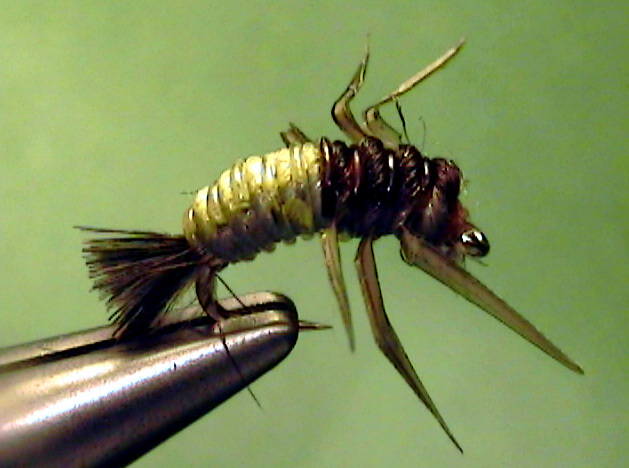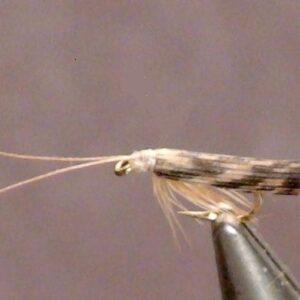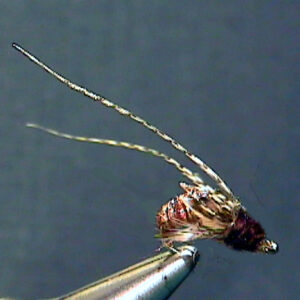Hook Size: 14/16
The Perfect Fly Spotted Sedge Larva is a trout fly that imitates larva stage of life of the Spotted Sedge. The spotted sedge is a net-spinning caddisfly. The larvae live in shed, type shelters and dangle themselves on a silk line attached to a rock to eat food caught in tiny nets they build near their shelters. This makes them easy prey for fish.
The larvae of the Spotted Sedge (hydropsyche species) are eaten by trout to a
great extent. It’s the position they find themselves in that makes them easy prey
for feeding trout. They dangle themselves on a silk line attached to a rock near
their shelters. This genus is from the Hydropsychidae family and are called net-
spinners. Net-spinners do not build cases to live in. They build retreats or
shelters that they reside in when they are not feeding, or moving from one place
to another. Net-spinning caddisflies drift tiny nets in the current to catch their
food or small particles of food from the water.
If you pick up a rock from the stream to look for these larvae, the net will collapse
and be very difficult to observe If all other conditions are present, the more
algae there are in a stream, the more likely there are net-spinning caddisflies
present. There are about seventy species in the hydropsyche genus. Fortunately
for anglers, there is not much difference in the many species or certainly not
enough difference that the methods of imitating them or the imitation itself (fly)
needs to be different for various species. Almost every stream in West contains
Spotted Sedges and many in the Mid-west and Eastern United States. Some of
them have huge populations of these insects. They usually live in the riffles and
runs of the streams. They must have current to survive.
Larvae Presentation:
We fish the fly without an indicator. We do add some weight a few inches above
it. You do not have to keep the fly on the bottom but you do want to keep it in the
lower section of depth of the stream. The method of presentation we use
depends on the stream and type of water. In general, we fish up and slightly
across in pocket water. Hold you rod directly above the fly and keep all of the fly
line you can out of the water to prevent extra drag. You will be fishing only a few
feet (very close) from your position, so this only works in fast, pocket water.
The water should be at least two or three feet deep or you will be likely to spook
the fish. You must make a careful approach without scraping your feet on the
bottom. Follow the fly with the rod tip all the way from the up and across position
until it is directly downstream of your position. You must feel the take in order to
know when to set the hook using this method, so you want to keep a tight line
from the fly to the tip of the rod. In moderate to faster flowing, smooth water we
fish down and across allowing the fly to swing from one side to the other much
the same way you would fish a soft hackle fly.
Copyright 2013 James Marsh


